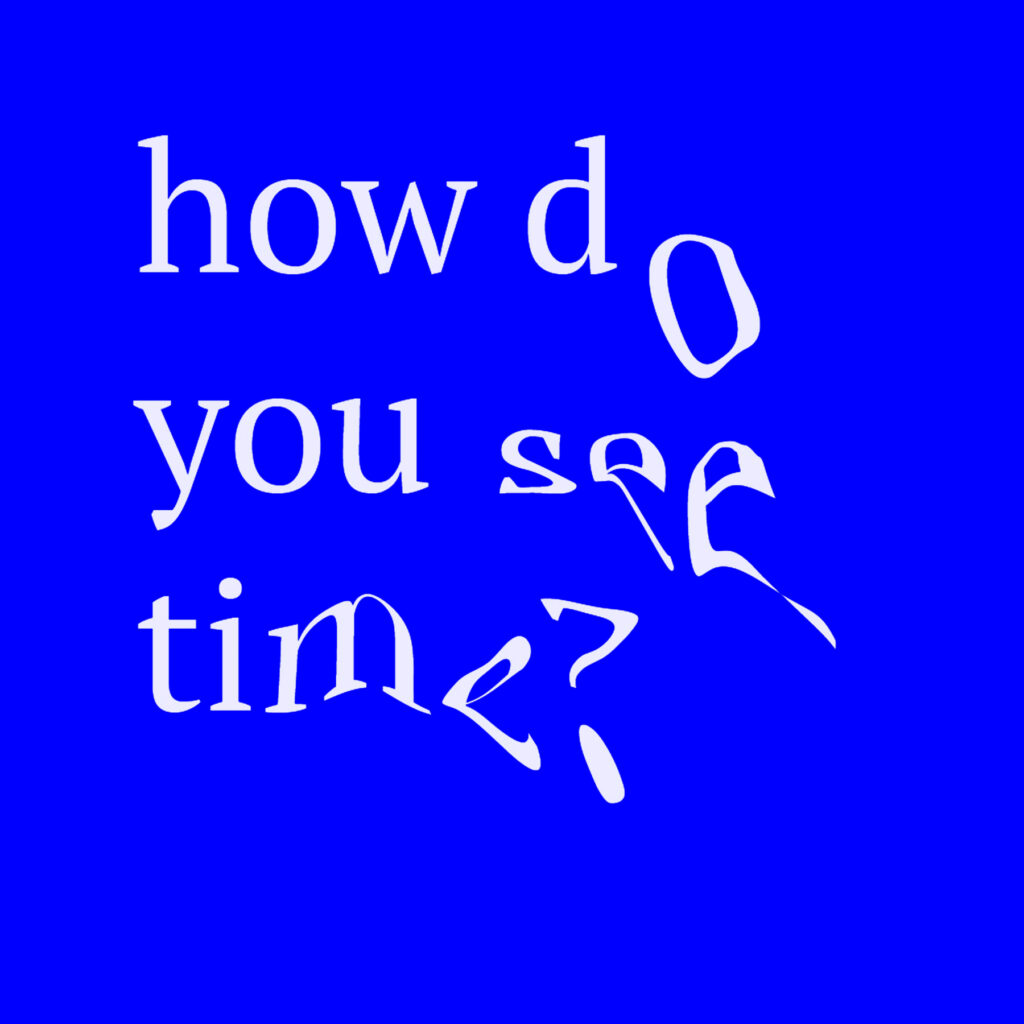I’ve always seen it the same way. One-week loops, warped to include Monday-Friday on one of the long sides of an ellipse, while Saturday and Saturday rest comfortably on the other. Every week the ellipse, turning on an invisible spit, stretches or thins to accommodate meetings and class and work, all projected onto this internal visual illusion. I assumed everyone conceptualized it this way, this bloated oval with dates and tasks embedded and evolving, and always rotating for a new week, which begins, in my mind, on Monday. I was surprised during a late-night (literal) fireside chat that not everyone sees time in their head as I do, or has even considered its conceptualization. My new favorite question has since become, “How do you see time?”
For a close friend, it looks like an inclined sidewalk, atmospheric perspective stretching his conception of time infinitely forward, sometimes littered with yard sign-like markers of goals or milestones to be met along the way of this uphill infinity.
For another friend, time shows as rows of weekdays, stacked one over the other. Sunday to Saturday, the days are annotated with month, date, and weekday.
My younger sister sees time in her head, “like a moving walkway at the airport,”. My older sister sees 24-hours at a time, categorized in black-and-white as “Stress Day” or “Good Day”, often accompanied by a tangible weight. My mom sees time rectangularly, almost like a calendar, but often taking on what she imagines to be the form of a meeting or scheduled activity. For my stepdad, time manifests as waves, larger like, “the kind you can body surf” at the beginning of the week, and tapering as the weekend approaches.
However it’s conceptualized for you, our internal models of time are perhaps our first visualization of abstract phenomena, evidence that cognitive processes of giving form to thought are neither uniform nor ever really sensical.

